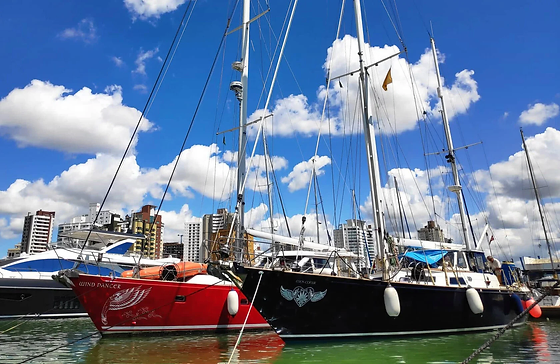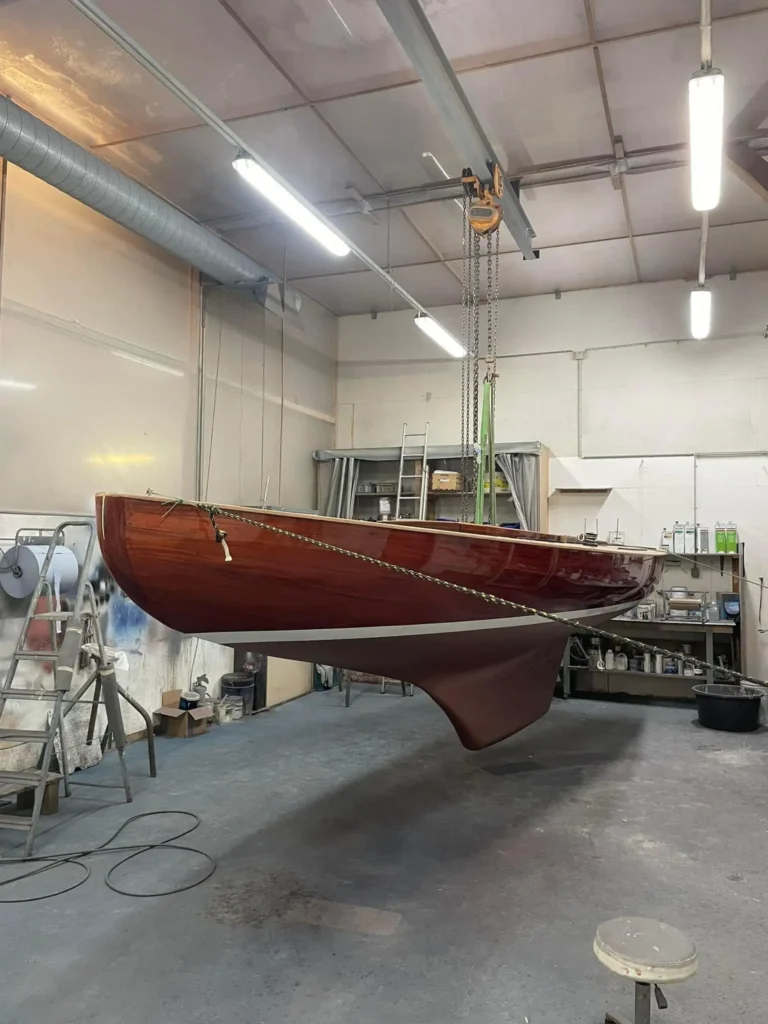
Check our website for Sailing Yacht Price. Sailing boats for sale, classic and modern wooden boats price. Motor boats from the manufacturer with low prices
The history of yachts goes back a long way. The first appearances were in the 1600s when wealthy Dutch merchants built and sailed small and relatively fast boats called “jacht”, especially for pleasure. The actual building and use of yachts sprung into life at the end of the 1800s. In the context of the present report, we will restrict ourselves to the period starting a little before the Second World War up to the present day.
Originally “jachts” were built in wood and in construction quite similar to what was customary in the normal shipbuilding of that time. The hull was single (massive) planking connected to closely spaced wooden frames. The frames were connected to wooden floors and those to the bottom planking. In the early days, many yachts still had flat or slightly curved bottoms. At the upper side, the frames were connected to the deck
beams on which the deck planking was laid.
Longitudinal stringers were mostly absent. Later when yachts got keels the construction changed. The sections became rather more V-shaped asking for different construction techniques. The stem beam, the keel beam, and the stern beam were introduced, which functioned also as longitudinal stiffeners, to which the frames were connected, which in turn were connected by the floors.
Sailing Yacht Price and Characteristics

The difficulties and weaknesses in the available connecting techniques of that time however posed a serious limit on the achievable overall strength and more in particular the overall rigidity of the yacht hull structure. All wooden construction was only to return in yacht building after the 1970s, when new and serious bonding techniques became available, such as epoxy resins, together with new wood laminating techniques.
So in the 1930’s the new “composite” construction technique came into force, in which the keel, stem, stern, frames, beams, and floors were all constructed in steel (and bolted or riveted, later welded together) to which the still wooden hull and deck planking was connected. This was a big improvement but still rather heavy. Still, later the complete steel hull came into play in which now in the composite d construction also the wooden hull planking and later also the wooden deck planking was replaced by steel and all were riveted or welded together.
This yields a sound and stiff construction for the hull. This construction technique, using either steel or aluminium, lasts till today and is most favored for the bigger yachts or for yachts with high demands on resistance against external local loads, such as yachts designed for use on long ocean voyages or in the arctic regions. After the 1950’s the new construction material “glass reinforced polyester” saw the light in yacht buildings. First, it enabled the series production of yachts bringing the
ownership to a wider public. Then the introduction of the more general “fiber-reinforced resin” materials and construction techniques brought a complete revolution in the construction of yachts. First, the material was used in constructions quite similar to the traditional construction in wood: i.e. with frames, girders, floors, beams, and the lot.
Sailing Boat and Sailing Yacht Price from the Manufacturer
Common practice was also the use of solid and rather thick laminates to overcome the lack of stiffness of the new material. It took some time for the industry to realize the full potential of the new material and to grow to more adapted and mature construction techniques. Monolith hull and deck constructions were introduced with integrated stiffeners. To be followed shortly by the very lightweight and very stiff sandwich construction technique using a low-density foam or wood as core material and very thin inner and outer laminates only.
For 15 years now also the use of very high-quality fibers with astonishing mechanical properties, such as aramid and in particular carbon fiber, has revolutionized the construction of high-performance yachts again and enormous gains in overall weight, strength, and stiffness have been achieved. These are all fields in which the yacht building industry became the front-runner, and many developments originated from the yacht-building industry experiments.
The yacht-building industry also became the one that was confronted with the associated problems and challenges first. A similar development can be noted in the evolution of the rig. In the early day, wood as a construction material was the norm. Dimensions and the layout of the yacht rig were restricted by the available lengths of wood till adequate connecting techniques (gluing) became available. Still, the wooden mast was rather voluminous and therefore heavy. All of this had a serious negative effect on the performance of a sailing boat.
A New Sailing Yacht Price
In the 1930s aluminum alloys became available as construction material for masts became available and this introduced the possibilities for much lighter and slender masts. Also, the stiffness of the mast could be improved as well as the quantity and the layout of the rigging. From the 1980s onwards the composite mast was introduced. Originally they were constructed in the more traditional material glass fiber reinforced polyesters such as in the so-called Freedom rig.
For over 25 years now carbon fiber and epoxy resin have been introduced for mast construction. In combination with very high-tech production techniques this has enabled a revolution in mast weight, stiffness, and performance Also masts and rigs have been produced like the Dyna Rig, which would not have been possible in any other material.
This is the first time that this subject of yacht design has been broached in an ISSC forum. Consequently, a slightly wider search of literature and background references has been made with regard to hull structure, masts, rigging, and appendages and keels. It has also been necessary for some areas to elaborate on the topics and themes in a fundamental manner. This examination of literature has been backed up by consultations with leading industrial houses in the design and construction of yachts and rigging.
